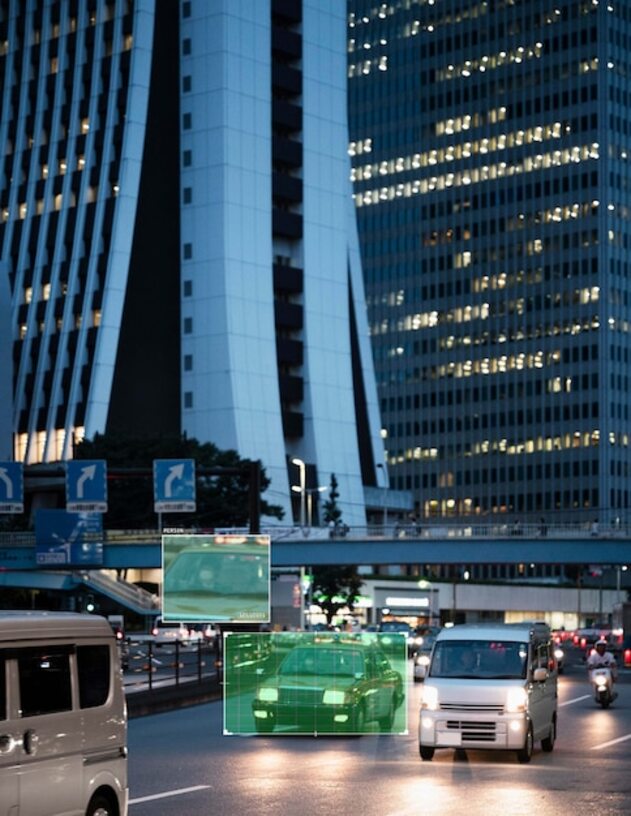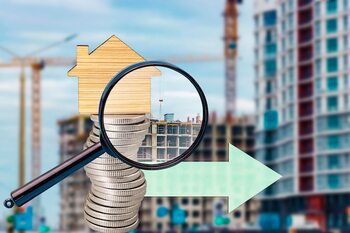The importance of urban mobility in real estate appreciation

Urban mobility is a key factor that influences real estate value, as it determines the quality of life and access to services in a community. In this article, we will explore how efficient transportation infrastructure not only improves coexistence but also enhances property values. Discover why investing in areas with good mobility can be your best decision and how this impacts the future of urban development in Costa Rica.
1. Definition of urban mobility: What does it really imply?
Urban mobility refers to the ability of people to move from one place to another within an urban environment, which includes a variety of modes of transportation such as cars, bicycles, public transport, and walking. This concept involves not only the physical infrastructure, such as roads and railways, but also the planning of urban space that facilitates these movements. Good urban mobility translates into accessibility, meaning the ease with which residents can reach their daily destinations—whether for work, education, or recreation—and access essential services such as healthcare or commerce.
Moreover, urban mobility directly impacts the social and economic behavior of a community. When transportation is efficient and well-connected, the time lost in transit is reduced, and greater use of public spaces is encouraged. This can result in more vibrant and cohesive communities where residents are more willing to interact with one another. On the other hand, poor mobility can lead to the isolation of specific areas, negatively affecting their economic development and decreasing their appeal to potential real estate investors. In this sense, understanding what urban mobility truly entails is essential to recognize its crucial role in real estate appreciation.
The relationship between public transportation and real estate valuation.
The relationship between public transportation and real estate appreciation is undeniable. Areas with an efficient and accessible transportation system tend to experience an increase in their value, as they facilitate the mobility of residents and improve their quality of life. Good public transportation reduces travel time and costs, which is highly valued by potential buyers. This translates into a growing demand for properties located near subway stations, bus stops, or trams, thus raising their price in the market.
Additionally, the development of public transportation can be a catalyst for urban revitalization. Investments in infrastructure not only attract new residents but also businesses and services that seek to capitalize on the flow of people. As a result, communities near these improvements often see growth in commercial and recreational offerings, further enhancing their appeal. Therefore, both investors and developers should consider proximity to public transportation as a key strategic factor when evaluating real estate opportunities.
3. Benefits of living near efficient transportation routes.
Living near efficient transportation routes offers a range of benefits that go beyond mere convenience. Firstly, easy access to public transportation significantly reduces the time and costs associated with daily commuting. This not only enhances the quality of life by allowing residents to spend more time on personal and family activities but also promotes a more sustainable lifestyle by decreasing reliance on private cars. As a result, properties located in these areas tend to have higher demand, contributing to their appreciation in value.
Additionally, well-connected areas tend to attract a variety of nearby services and businesses, creating a vibrant and dynamic environment. Proximity to schools, hospitals, and shopping centers increases convenience for residents, making these areas desirable places to live. This chain effect can also boost local investment and foster community development. Consequently, properties located in strategically connected places not only benefit from increased property value but also strengthen the social fabric of the neighborhood, making living there even more appealing to future buyers and renters.
4. How mobility affects traffic and pollution in cities.
Urban mobility not only refers to the ability of people to move around, but it also plays a crucial role in traffic and pollution in cities. An efficient and accessible transportation system can significantly reduce vehicular congestion by promoting the use of sustainable alternatives such as bicycles, public transport, and walking. When infrastructures are designed to facilitate these modes of transportation, the number of cars on the streets decreases, which in turn minimizes traffic jams and improves traffic flow. This not only enhances air quality but also contributes to a more pleasant and healthy urban environment.
Additionally, the reduction of air pollution generated by vehicles is a determining factor in real estate value. Areas with high pollution levels tend to be less desirable for potential buyers, which can negatively affect property prices. In contrast, well-connected areas with sustainable mobility options tend to attract more residents and businesses, thereby increasing their value. The relationship between mobility, traffic, and the environment underscores the importance of planning cities that prioritize citizen well-being and promote more sustainable lifestyles, creating a virtuous circle where everyone benefits.
5. Successful urban mobility projects in Costa Rica.
In Costa Rica, several urban mobility projects have proven to be successful and have generated a positive impact on real estate appreciation. One of the most notable examples is the development of the interurban electric train that connects key areas such as San José with Heredia and Alajuela. This type of infrastructure not only reduces travel time but also promotes the use of public transportation, which in turn decreases traffic congestion and improves air quality. Properties located near train stations have seen a significant increase in their value, as buyers seek convenience and accessibility in their real estate decisions.
Another notable project is the expansion and modernization of bike lanes in several Costa Rican cities. These initiatives promote a healthier and more sustainable lifestyle by encouraging the use of bicycles as a daily means of transportation. As bike lanes expand, the surrounding areas become more attractive places to live, contributing to an increase in property value. Real estate developers are beginning to recognize this trend and are choosing to build residential projects near these safe routes for cyclists, thus aligning with a more modern and ecological vision of urbanism.
6. The impact of telecommuting on the demand for strategic location.
Telecommuting has transformed the way people perceive the location of their homes. With the flexibility of working from home, many have begun to prioritize features that were not previously as decisive, such as space and the quality of the immediate environment. This has led to an increase in demand for properties located in quiet areas with access to nature, as well as in communities that offer good infrastructure for basic services. In this new context, those locations that combine tranquility and accessibility have become true magnets for buyers and renters. Furthermore, telecommuting has allowed people to move to places they previously did not consider living due to their distance from workplaces. Thus, a phenomenon of urban decentralization is observed, where peripheral or rural areas are gaining appeal due to their lower cost and superior quality of life. This trend is not only redefining the real estate market but is also driving sustainable urban planning projects and community development in less populated regions. Areas that can quickly adapt to this new demand will experience a significant increase in their real estate value due to their ability to offer a balanced lifestyle between work and rest.
7. Urban vs rural areas: differences in added value due to mobility.
The differences in capital gains due to mobility between urban and rural areas are noticeable and can significantly influence real estate investment decisions. In urban areas, where transportation infrastructure is often more advanced, property owners enjoy quick access to essential services such as schools, hospitals, and shopping centers. This connectivity not only improves the quality of life but also increases property values. On the other hand, rural areas tend to lack these facilities; the limited availability of public transportation and the distance from services can make real estate values lower compared to their urban counterparts.
However, it is important to note that rural areas have their own dynamics in terms of appreciation. As initiatives to improve rural mobility develop, such as improved roads and new public transport routes, the appeal of these areas may increase significantly. This could result in long-term appreciation of real estate value as more people seek to escape the urban hustle to quieter environments without sacrificing access to basic services. Thus, in both urban and rural contexts, mobility becomes a key determinant for assessing the potential for real estate appreciation and guiding informed decisions about future investments.
8. Future perspectives: trends in mobility and their real estate effect.
Trends in urban mobility are evolving rapidly, driven by technological innovations and a growing focus on sustainability. The rise of electric vehicles, shared transport options, and bike infrastructure are transforming the way we move within cities. These new forms of mobility not only provide more efficient solutions for daily commuting but also promote a significant reduction in traffic congestion and environmental pollution. As these trends take hold, areas with good mobility infrastructure are likely to experience a notable increase in their real estate value, as buyers increasingly value access to sustainable and convenient transport options.
Additionally, urban design is beginning to prioritize pedestrian spaces and green areas, which significantly improves the quality of life in communities. This multidimensional approach to mobility is expected to not only benefit the environment but also increase the attractiveness of certain areas for real estate investors. As cities adapt to these changes, those developments that integrate sustainable mobility solutions will be better positioned to attract both residents and businesses. This means that understanding these trends will be crucial for anyone interested in investing or developing properties in the near future, as real estate value will be intrinsically linked to the ability to move efficiently within the urban environment.
9. The importance of planning accessible communities for everyone.
The planning of accessible communities for all is essential in the context of urban mobility, as it promotes effective and equitable social integration. When spaces are designed with the needs of people with disabilities, the elderly, and families with young children in mind, a more inclusive environment is achieved. This not only improves the quality of life for residents but also enhances the area's appeal from a real estate perspective. Properties located in well-planned communities often experience an increase in their value due to the demand from those seeking a safe and accessible environment.
Furthermore, fostering accessible communities contributes to sustainability and the efficient use of urban space. By prioritizing public transportation, safe pedestrian routes, and access to essential facilities such as schools and hospitals, reliance on cars is reduced. This not only decreases traffic and harmful emissions but also creates a healthier and more friendly environment for all residents. Areas that implement these practices are often seen as more valuable and innovative, which attracts additional investments and generates greater long-term real estate appreciation.
10. Smart investments: identifying areas with growth potential due to mobility.
Identifying areas with growth potential due to mobility is essential for any investor looking to maximize the value of their properties. Areas that have efficient access to public transportation, main roads, and essential services tend to experience an increase in real estate demand. This occurs because families seek locations that offer them not only convenience but also a better quality of life. By focusing on these areas, investors can anticipate urban development and strategically position themselves before prices soar.
Additionally, urban mobility influences the creation of new projects and infrastructures that further enhance accessibility. For example, if a new metro line or a roadway expansion is planned, it is likely that properties close to these developments will see a significant increase in their value. The key is to conduct a thorough analysis of the environment and stay informed about municipal and regional plans. By correctly identifying these emerging areas, one can make a smart investment that not only generates short-term profitability but also ensures sustainable growth over time.



